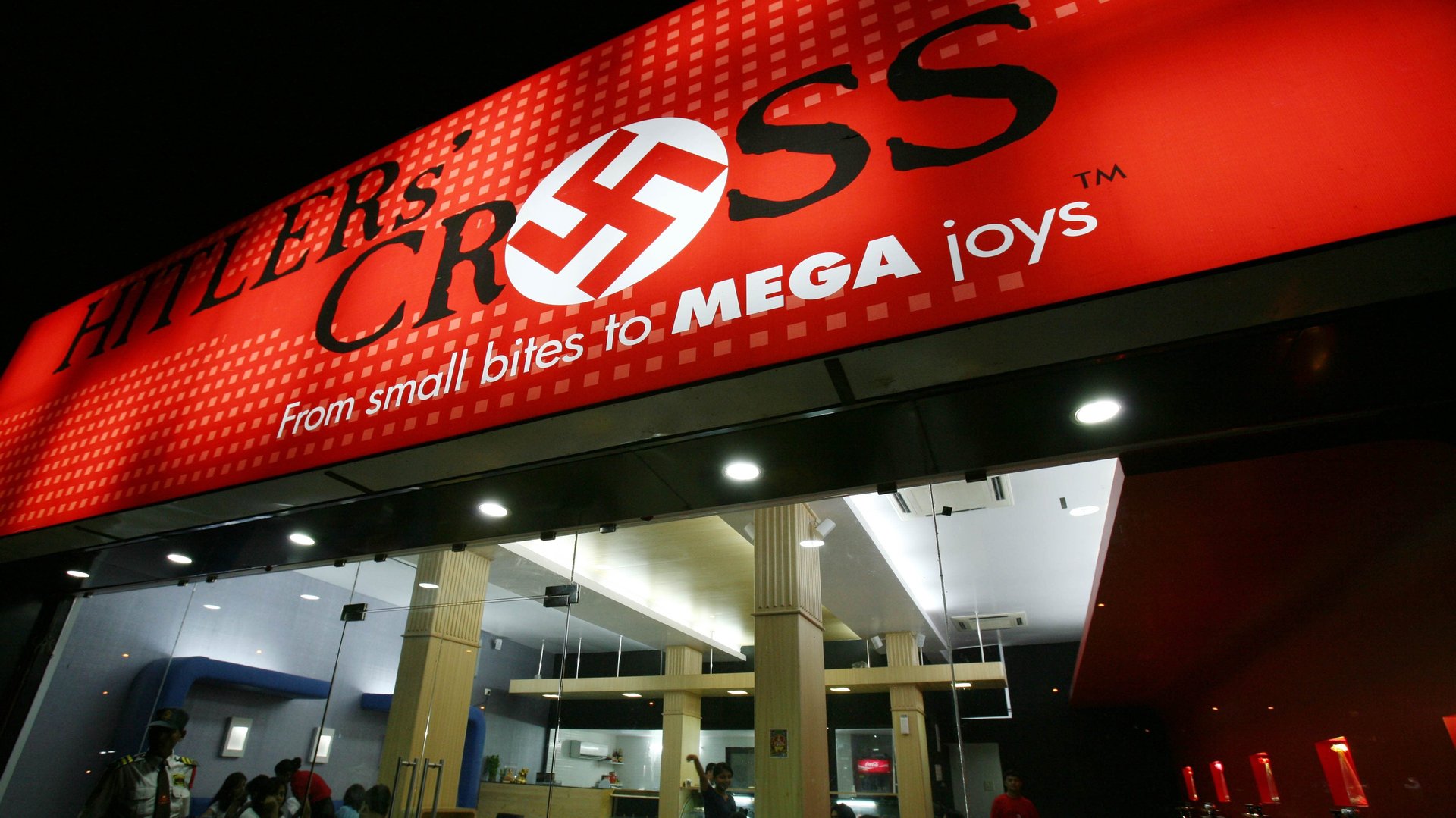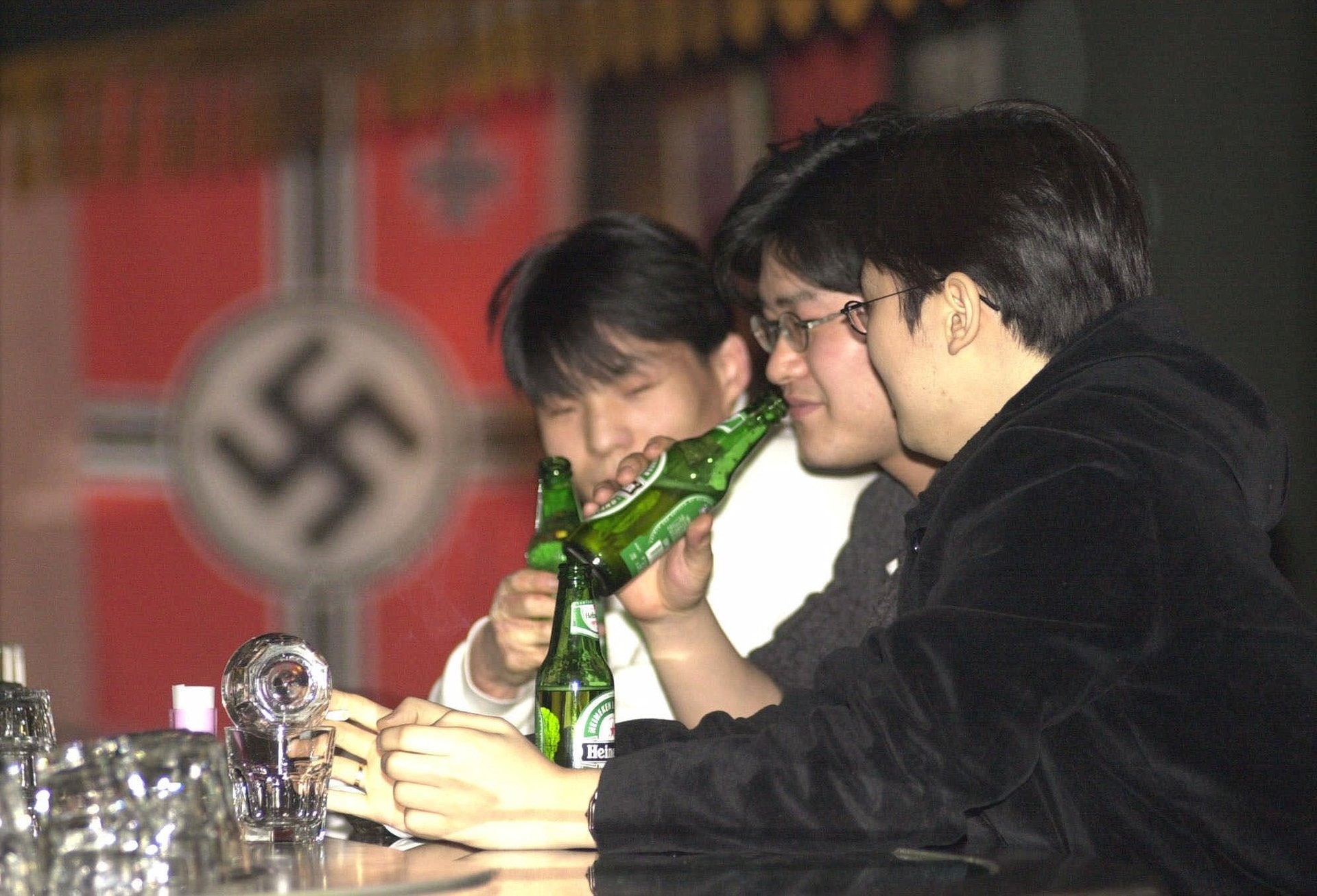Asia’s disturbing embrace of “Nazi chic” is prompting a nonprofit to teach Holocaust history
It’s a dismaying yet recurring phenomenon that takes place in disparate Asian countries: young people, not known for sympathizing with far-right groups, playing with Nazi imagery in highly public settings.


It’s a dismaying yet recurring phenomenon that takes place in disparate Asian countries: young people, not known for sympathizing with far-right groups, playing with Nazi imagery in highly public settings.
Examples abound. Last December a school in Taiwan staged a Hitler-themed parade for its anniversary celebration, leading to the principal’s resignation. A few weeks earlier, Sony Music apologized after one of its girl bands performed in Nazi-looking outfits. Two years before that a girl group in South Korea showed up in similar fashion. Thailand, India, and Indonesia have had their share of Nazi-themed bars, parades, and performances. The list is long and repetitive—and disconcerting.


It isn’t just the region’s youngsters who fail to appreciate the Holocaust’s gravity. In Hong Kong last month, after a court verdict condemned seven policemen to jail terms for beating a pro-democracy protester in 2014, their colleagues staged a demonstration during which one of them said that they were being “persecuted like the Jews in Germany,” to other demonstrators’ cheers. The German and Israeli diplomatic missions condemned the comparison, and a half-hearted apology ensued.
A mission to educate
For the past six years, the Hong Kong Holocaust and Tolerance Centre, the only organization of its kind in Asia, has used education to counter the recurring use of “Nazi chic.”
“The optimist in me wants to think that this happens just out of ignorance, and that the comparison with something more familiar helps,” says co-founder April Kaminsky. With that in mind the center also teaches about regional tragedies like the Nanjing Massacre in China during World War II and the “killing fields” in Cambodia under the rule of Pol Pot. “That makes the topic quite relevant to the region.”
Generally speaking, World War II history is present in school curricula in the region, but it concentrates on what happened locally—when Japanese troops conquered most of East and Southeast Asia, committing countless atrocities that still scar diplomatic relations between Tokyo and its neighbors. As for the way Nazi Germany industrialized the mass murder of the Jews—as well as homosexuals, communists, and Gypsies—it’s touched upon only vaguely, if at all.
The center organizes exhibitions and brings Holocaust survivors and their relatives to Hong Kong to lecture in local schools. It also encourages young people from Hong Kong and mainland China to join the annual International March of the Living in Poland, and helps to arrange trips.
“It’s a trip that changes you forever,” says Kaminsky, “and I’m encouraged that the highest numbers of requests to join we have entertained recently have come from [mainland] Chinese people.”
“Victimhood envy”
According to Martin Chung, a member of the center and a professor at Hong Kong Baptist University, the popularity of Nazi themes in Asia points to a wider problem and presents some intractable issues. Aside from historical ignorance, he says, there’s a recurring “victimhood envy” that makes the Holocaust remembrance “a victim of its own success.”
“There is this general feeling that the Jewish people have certainly suffered, but that others have suffered too,” he says. “The greatest example of this was Iris Chang’s book The Rape of Nanking, which was not a scientific comparison, but stemmed from this feeling of unfairness: Why is Jewish suffering remembered so much, and not Chinese suffering?”
Of course, he adds, “it does not make any sense if you are serious about what the special features of the Holocaust were, but it is a desire of being taken seriously as a victim, too.”
More surprisingly, Chung suggests, is that the use of Nazi imagery—though it looks like idiocy to outsiders—can sometimes serve in Asia to make an anti-establishment, taboo-breaking statement: “This cannot happen through a kind of leftist symbolism, which in the case of Taiwan, for example, would be quite impossible because of the link to [communist] China. So what else are you going to use to be really anti-establishment? What symbols are available that are forbidden? It was a bit like wearing a Mao cap in pre-1997 Hong Kong. It shocked people.”
To get through to its audience, the center goes beyond history lessons and stresses the importance of simply being tolerant of people’s differences. That involves “telling them the why behind things, in order to teach [them] to be more understanding and accepting of others,” says Kaminsky. “It starts at the basic level of kids bullying each other. It can end in catastrophes.”
But even as they push for greater education, the center’s volunteers know it’s a matter of when, not if, the next Nazi-chic incident will occur in the region.